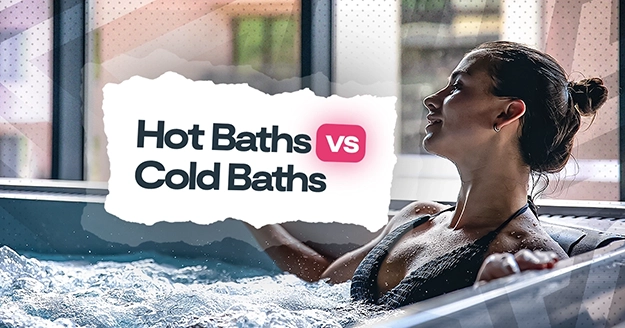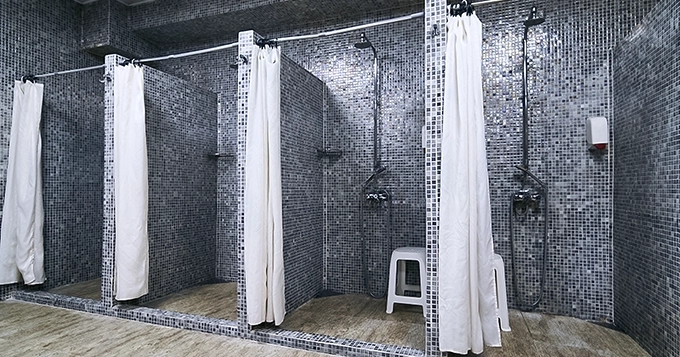
Key Takeaways
- Hot baths boost blood flow for faster recovery and less muscle fatigue.
- Cold baths reduce soreness and inflammation after tough workouts.
- Hot baths relax muscles and relieve stress, aiding recovery.
- Cold baths ease muscle pain like DOMS, speeding up healing.
- Use cold for intense workouts and hot for relaxation and stress relief.
Let’s dive into the debate: ice bath vs hot bath.
After a rigorous workout session, we often seek ways to soothe our tired muscles and promote faster recovery. One popular method is taking baths, but the question arises: should you opt for a hot bath or a cold bath?
Let’s explore the benefits of each so you can make an informed decision for your post-workout recovery routine.
Benefits of Hot Baths for Post-Workout Recovery
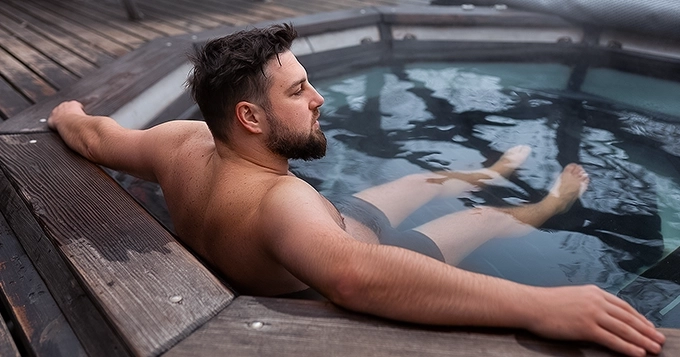
The warmth from the water in a hot tub can help increase blood flow, which in turn promotes faster recovery and reduces muscle fatigue.
Better circulation means essential nutrients and oxygen are delivered more efficiently to your muscles, aiding in their healing process after exercise. This is one of the main perks of using a hot tub after a workout.
Dipping in a hot tub can be a great way to soothe inflammation in your muscles and joints, giving them a chance to recover after a workout. Inflammation is the body’s natural response to strain or injury, but too much of it can cause discomfort and pain. By easing inflammation, you can ease muscle and joint pain, making it more manageable to keep up with your exercise regimen.

Imagine the soothing warmth of the water enveloping your tired muscles, melting away tension and stress accumulated during your training.
This relaxation isn’t just a luxury; it’s a vital part of post-workout recovery. The heat from the hot tub promotes increased blood flow to your muscles, bringing with it essential nutrients and oxygen while flushing out metabolic waste products.
As a result, muscle tension diminishes, allowing you to unwind and recover more effectively. This is especially helpful for those who regularly engage in high-intensity exercises or strength training, where muscle soreness often accompanies the exertion.
So, next time you hit the gym or push your limits during a workout, consider treating yourself to a rejuvenating soak in a hot tub to ease those post-exercise aches and pains.
Hot baths can work wonders in easing stress and anxiety, contributing to your overall mental well-being post-workout.
Exercise is renowned for triggering the release of endorphins, those feel-good hormones that lift mood and diminish stress. By letting yourself enjoy a hot tub, you can amplify these benefits, experiencing even greater relaxation and stress relief.

Soaking in a hot tub provides effective pain relief through various means. The warmth from the water dilates blood vessels, improving circulation and delivering nutrients to the affected areas, which aids healing and reduces pain.
Warm water also triggers the production of endorphins, your body’s natural painkillers, promoting relaxation. Additionally, the buoyancy of the water reduces gravitational pull, easing pressure on joints and muscles, making movement easier and decreasing discomfort.
The massaging action of the water jets targets specific areas of pain, offering further relief. These benefits extend to individuals with arthritis, joint issues, or those engaging in high-impact exercises like running. Furthermore, hot tub therapy has been found beneficial for managing pain in fibromyalgia patients.
Cons of Hot Bath After Workout:
- Hot baths can dry out and irritate your skin by damaging the keratin cells on the outer layer, leading to dryness and reduced moisture retention.
- Certain skin conditions like eczema can worsen with hot showers as higher temperatures increase the likelihood of skin drying out.
- Hot showers may cause itching as heat triggers mast cells to release histamine, resulting in skin irritation.
- Taking showers that are too hot can raise blood pressure and worsen conditions like high blood pressure or cardiovascular disease.
Benefits of Cold Baths for Post-Workout Recovery
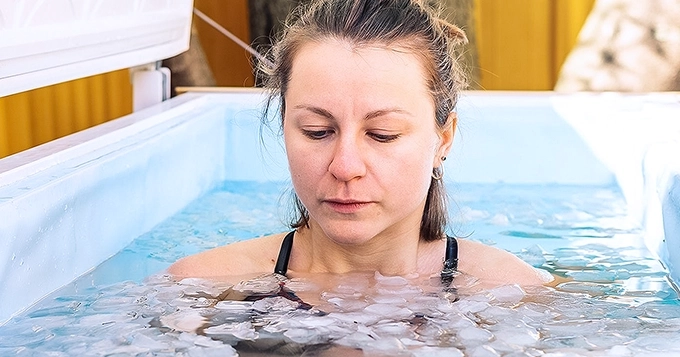
What is DOMS?
Delayed-Onset Muscle Soreness (DOMS) symptoms can vary from mild tenderness to downright debilitating pain. It’s a muscle pain that you can experience a day or two after working out.
Here’s why you might want an ice bath before or after workout.
Taking a dip in cold water might help ease the pain. Research shows that cold therapy lessens the effects of DOMS and helps your body recover faster.
Here’s how it works: even though cold water at first slows down blood flow, it eventually gets things moving again. This means more oxygen-rich blood gets to your sore muscles, which could help them heal quicker. Consider incorporating an ice bath before or after a workout to potentially enhance recovery and performance.
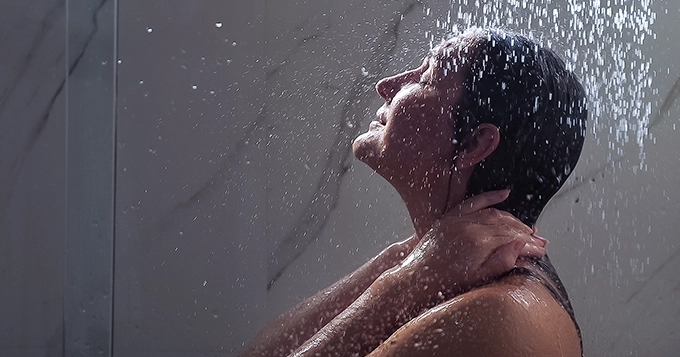

In a 2016 study published in the Journal of Advanced Pharmaceutical Technology and Research, researchers discovered that cold water causes blood vessels to tighten, restricting blood flow. This tightening effect hydrates cells, detoxifies the body, and enhances skin and muscle tone. Unlike hot water, cold water doesn’t deplete the skin’s natural moisture. Additionally, it aids in smoothing hair cuticles, leading to silky and shiny hair.
Cons of Cold Bath After Workout:
- An ice bath after a workout may not be ideal if you’re already feeling cold, as they won’t help warm you up and could potentially make you even colder, prolonging the time it takes for your body to heat back up.
- They might not be recommended when you’re sick either, as the sudden exposure to cold temperatures could be harsh on your immune system. It’s advisable to gradually introduce colder temperatures instead of subjecting your body to extreme cold when you’re unwell.
Which One Should You Choose?
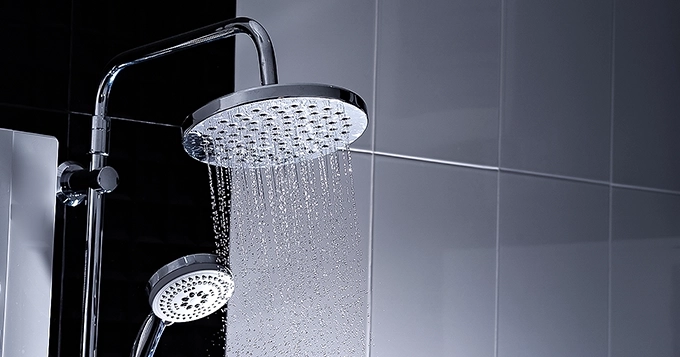
The decision between hot baths and cold baths ultimately depends on your personal preferences, specific recovery needs, and the type of workout you’ve completed. A great way to support your recovery is by pairing it with an effective workout plan. If you’re just starting out, check out our “Beginner Workouts for Women” guide. It provides an easy-to-follow routine to help you stay on track and avoid injuries as you build strength. Look into the article and kickstart your fitness journey with confidence.
Here are some factors you can consider when making your choice:
- Intensity of Exercise: For high-intensity workouts or activities that result in significant muscle soreness and inflammation, such as heavy weightlifting or long-distance running, cold baths may be more beneficial due to their anti-inflammatory effects.
- Pre-existing Conditions: People with injuries or certain medical conditions may find that one temperature works better for them than the other. Consult with your doctor or a healthcare professional if you have any concerns or pre-existing conditions.
- Experimentation: It’s essential to experiment with both hot and cold baths to determine which option feels best for your body and yields the most effective results in terms of recovery and muscle recovery.
